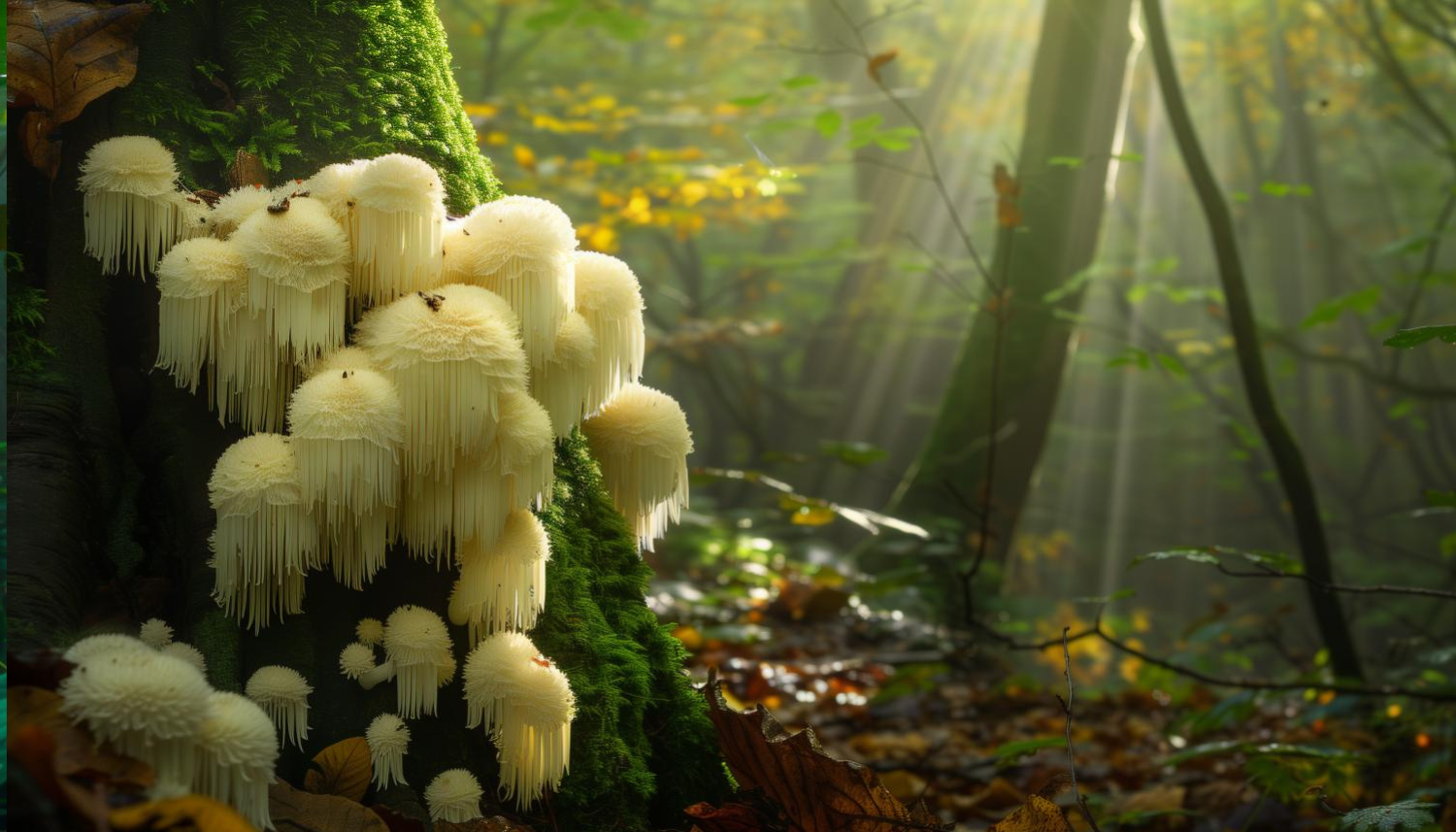Growing Lion's Mane (Hericium erinaceus) can be a rewarding experience, but it also comes with its own challenges. This unique mushroom, known for its health benefits and culinary versatility, requires specific conditions to grow well. In this blog post we discuss the most common problems when growing Lion's Mane and how to solve them.
What is Lion's Mane?
Lion's Mane, also known as wig mushroom, is a mushroom known for its unique appearance and health benefits. It is often used in cooking for its crab-like texture and flavor, and it is also praised for its potential cognitive benefits.
Common Problems and Solutions
1. Contamination
Problem: Contamination by unwanted micro-organisms such as fungi and bacteria.
Solution:
- Sterilization: Sterilize the substrate (e.g. hardwood pellets and wheat bran) for at least 45 minutes using a pressure cooker, autoclave or steam cooker.
- Hygiene: Make sure the work area is clean when adding the spawn to the substrate.
- Cooling: Allow the sterilized substrate to cool for at least 8 hours to minimize the risk of contamination.
2. Improper Mixing
Problem: Uneven distribution of ingredients leads to poor growth.
Solution:
- Thorough mixing: Mix the hardwood pellets, water and wheat bran thoroughly before filling the grow bags.
- Shake: Shake the grow bag well after adding the spawn to ensure even distribution.
3. Temperature problems
Problem: Incorrect temperature during different growth stages.
Solution:
- Incubation phase: Maintain an ambient temperature of 25°C and a substrate temperature of 27°C.
- Expansion phase: Reduce the temperature to 18-24°C.
- Fruit phase: Maintain a temperature between 16-21°C.
4. Humidity control
Problem: Insufficient humidity affects mushroom growth.
Solution:
- Incubation: Maintain a relative humidity of 90-95% during incubation.
- Fruiting phase: Keep humidity between 85-95%.
- Mist sprayer: Use a fine mist sprayer to keep the area moist, especially around the cut made for fruiting.
5. CO2 levels
Problem: High CO2 concentration can inhibit mushroom growth.
Solution:
- Ventilation: Ensure CO2 levels are between 500-1000 ppm during the fruiting stage.
6. Light exposure
Problem : Improper light levels affect mushroom development.
Solution:
- Light intensity: Provide light exposure of less than 500 lux during the fruiting stage.
7. Timing of the Harvest
Problem: Harvesting too early or too late.
Solution:
- Harvest time: Harvest when the Lion's Mane mushrooms are slightly smaller than a tennis ball to prevent dehydration.
8. Air exchange
Problem: Insufficient air exchange leads to poor growth.
Solution:
- Air circulation: Make a diagonal cut in the grow bag to allow good air exchange and stimulate fruit formation.
9. Substrate quality
Problem: Poor quality or incorrect substrate leads to poor growth.
Solution:
- High-quality substrate: Use a high-quality substrate such as hardwood sawdust or a mix of hardwood sawdust and bran. Make sure the substrate is properly sterilized.
10. Pests
Problem: Insects and other pests can damage the mushrooms.
Solution:
- Pest control: Keep the growing area clean and use pest control measures such as sticky traps or natural enemies.
Frequently Asked Questions
How do you grow Lion's Mane?
Growing Lion's Mane starts with choosing a suitable substrate, such as hardwood sawdust mixed with wheat bran. Sterilize the substrate, add the spawn, and ensure proper temperature and humidity. Detailed instructions can be found in our grow kits.
What to look for with Lion's Mane?
Pay attention to the correct temperature, humidity, and air circulation. Make sure the substrate is properly sterilized to avoid contamination. Also keep an eye on CO2 levels and ensure adequate light exposure.
What do you notice about Lion's Mane?
Lion's Mane is known for its health benefits, including improved cognitive functions and nerve repair. It also has a unique flavor and texture that makes it a popular choice in the kitchen.
What does Hericium do?
Hericium Erinaceus, or Lion's Mane, has several health benefits. It can help improve cognitive functions, support the nervous system, and promote overall health. It is often used in supplements because of these properties.
Conclusion
Growing Lion's Mane can be challenging, but with the right knowledge and techniques you can successfully grow this beautiful mushroom at home. By paying attention to the common problems and their solutions, you can enjoy a bountiful harvest of this unique and beneficial mushroom.
At Toshi Farm we are passionate about sharing our knowledge and providing high quality grow kits and supplements. Visit our website for more information and to start your own Lion's Mane breeding adventure!


